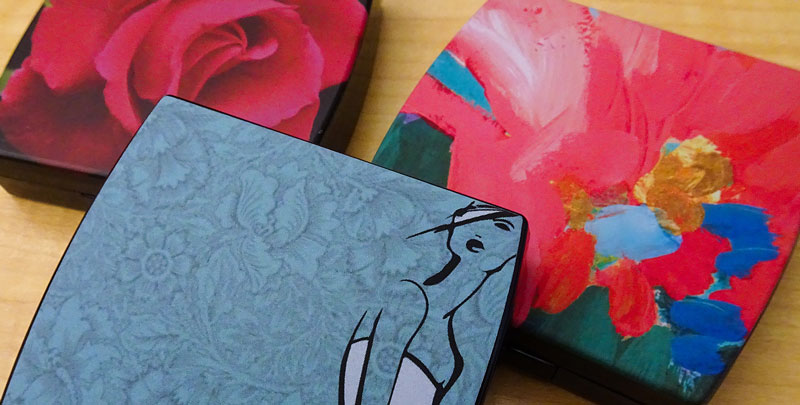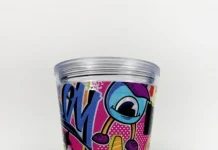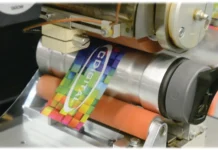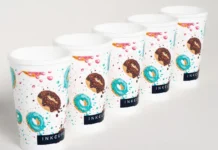Every day, the power of the internet changes how people shop, travel and gather information. Googling has become part of everyday lexicon. People board airplanes without paper tickets, book rides with strangers or even stay in someone else’s home with the use of an app. Products from around the world can be delivered within days of being ordered. It is possible to adjust thermostats, check garage doors or even count individual footsteps with connected technology. Quite literally, the world has become easier to navigate because of the powerful simplicity of the web.
Product decoration is no exception to this change. Advances in digital imaging technology now allow manufacturers to connect the products they decorate to the web via the decoration they apply. This advancement changes the value proposition of decoration far beyond mere aesthetics. Suddenly the decoration can facilitate the connection between brand owner and consumer, creating powerful product value streams that can be triggered easily at point-of-use.
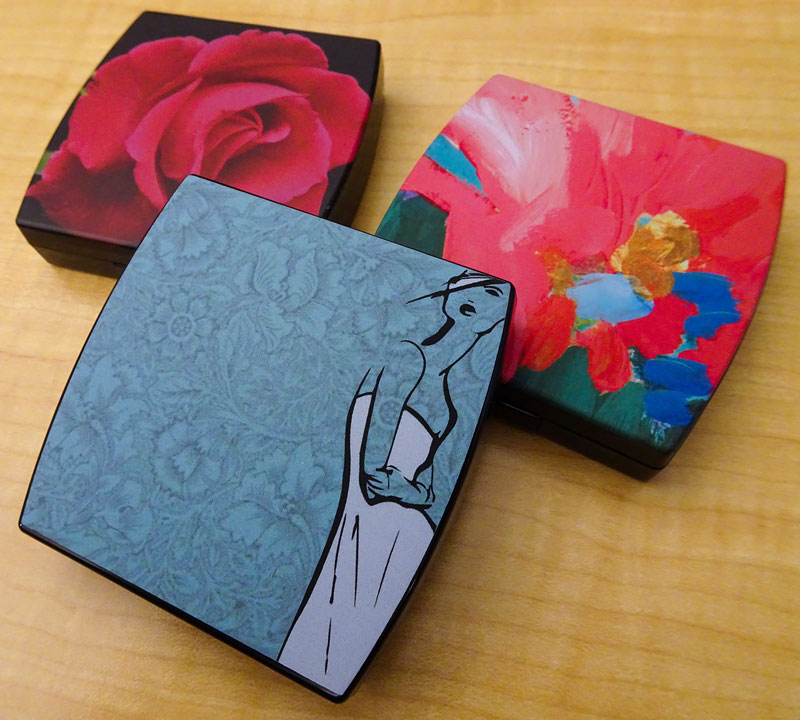
Not a new concept
Connecting the power of the web to a product is not a new concept. For as long as the internet has existed, companies have continued to explore how to leverage data to enhance their products or their use. Parts manuals, how-to videos, online ordering and user group FAQs have been staples for online data that have helped to build customer value and loyalty.
But the method of connecting the product, the customer and the web has been clumsy. Other than attaching a Quick Read (QR) code on a product, product managers have had to rely on customers to log on, search and seek out product data. The horsepower of the web always has relied on the consumer to take a series of steps to uncover the benefit. Unfortunately, the series of steps often leads to transaction abandonment.
Making it easy with digital watermarking
Digital watermarking is an image creation technology that essentially embeds a QR code into the image of a decoration. The code is invisible to the naked eye, but, with the proper app, a smartphone can scan the decoration and immediately connect to a website directed by the code. Product managers can use this simple connectivity to accelerate the consumer’s connection to their website.
With the addition of a unique identifier (UI) added into the digital watermark, not only is the consumer driven to the website, but the scanned UI identifies the specific product visit to the website.
The value of a digital watermark with UI
The exciting prospect of digital watermarks is how easily they can be employed and the levels of expanded value they provide. In many ways, the digital watermark with UI can achieve much of the same track-and-trace functionality of RFID tags and the product authenticity of physical compound taggants, but it does so without the need for special compounds, tags or scanning equipment. With the use of a smartphone app, a UI mark can be read, validated, cross-referenced and tracked.
Beyond product authentication and validation, the watermark also provides the brand owner the opportunity to connect with consumers and deliver additional information value. Specifically, digital watermarks offer the following benefits:
- Product tracking and authentication – The UI allows for the immediate capture of specific product details for warranties, recalls and updates.
- Product counterfeit protection – An embedded UI adds a level of complexity and cross-reference checking that makes the mark difficult to counterfeit.
- Product consumer experience – Because the watermark is embedded in the decoration, it lasts the life of the product and provides consumers the ability to reconnect with the brand owner to receive how-to videos, maintenance history, information on complementary products or accessories, or engage at a level that heightens brand awareness and essence.
Requirements for a digital watermark with UI through decorating technology
An image that is marked with a digital watermark with UI requires the following specific attributes in design and output:
- Imaging technology must be digital. Although a static digital watermark can be included on a product with conventional printing methods, the added functionality of a unique identifier requires a digital imaging process that can generate each UI image.
- The image must be created with a halftone or 4-color process. The digital watermark is embedded by hiding it in the image frequency of a tone and not a solid color. While a solid color could be marked, the output of the color would have artifacts that would reduce its visual quality. Alternatively, with halftone or 4-color process images, the watermark hides elegantly in the dot patterns.
- Image application to the plastic part also must be distortion-free. Because the digital watermark requires the identification of its code with a smartphone app, if the image is distorted by the method of application, then read rates can be compromised.
Evaluating decorating methods for digital watermarking
Because of the technical requirements of digital watermarking with UI, it is possible to evaluate which common decorating technologies are better suited for this application. Below are a few technologies particularly suited for digital watermarking:
- Pad printing – As a conventional technology, only a static digital watermark without UI functionality could be attempted. However, because of the dot distortion created by the pad printing process, even a static digital watermark would have a potentially low read rate.
- Heat transfer – If the heat transfer is created with digital printing, then the potential to deliver UI functionality exists. However, like pad printing, if the image is distorted by the transfer process, the read rate is likely to be lowered.
- Adhesive labels – If created with digital printing, adhesive labels represent an effective method to deliver a watermarked image to a product. Only the limitations of adhesive permanence may reduce the authentication functionality of the watermark.
- In-mold decoration – If created with digital printing, this is currently the most practical technology for delivering a watermarked image with UI. The image can be molded without significant distortion, and the in-mold label has an elevated level of permanence.
- Direct imaging with digital inkjet – This technology is evolving rapidly and should be a natural application for decorating with digital watermarks with UI. Resolution and distortion could be factors if the decoration dimensionally wraps the part, but most imaging should achieve an effective mark.
Conclusion
A decorated plastic part that carries a uniquely identified digital watermark in the image provides a connected functionality to the product, much like the technology trend of the Internet of Things. Although passive and triggered by the consumer, this point-of-use connectivity streamlines the brand owner-consumer connection and releases a series of value propositions.
Consider a simple cosmetic case. If the case is digitally watermarked, the cosmetic case becomes the gateway that connects the consumer to the brand. The brand can immediately validate to the customer that the product is authentic. The brand owner can suggest complements to the product, offer videos on how to use the product, capture user data and suggest reorders. The opportunities for the brand owner to re-engage with the consumer are dynamic and virtually endless.
Product managers, entrepreneurs and brand owners are racing to find ways to leverage the experiences of the web to create new levels of value and engagement for their products, inventions and brands. Instead of microchips and complex technology, it appears that plastic decorating with digital watermarks can be an easy, immediate and elegant alternative to delivering the power of internet connectivity.
Bob Travis has spent 20 years working with injection molding companies and brand owners. He is owner and president of InkWorks Printing LLC and Wall Pepper LLC, and the acting president of the In-Mold Decorating Association and a member of SPE. For more information, visit www.inkworksllc.com.

